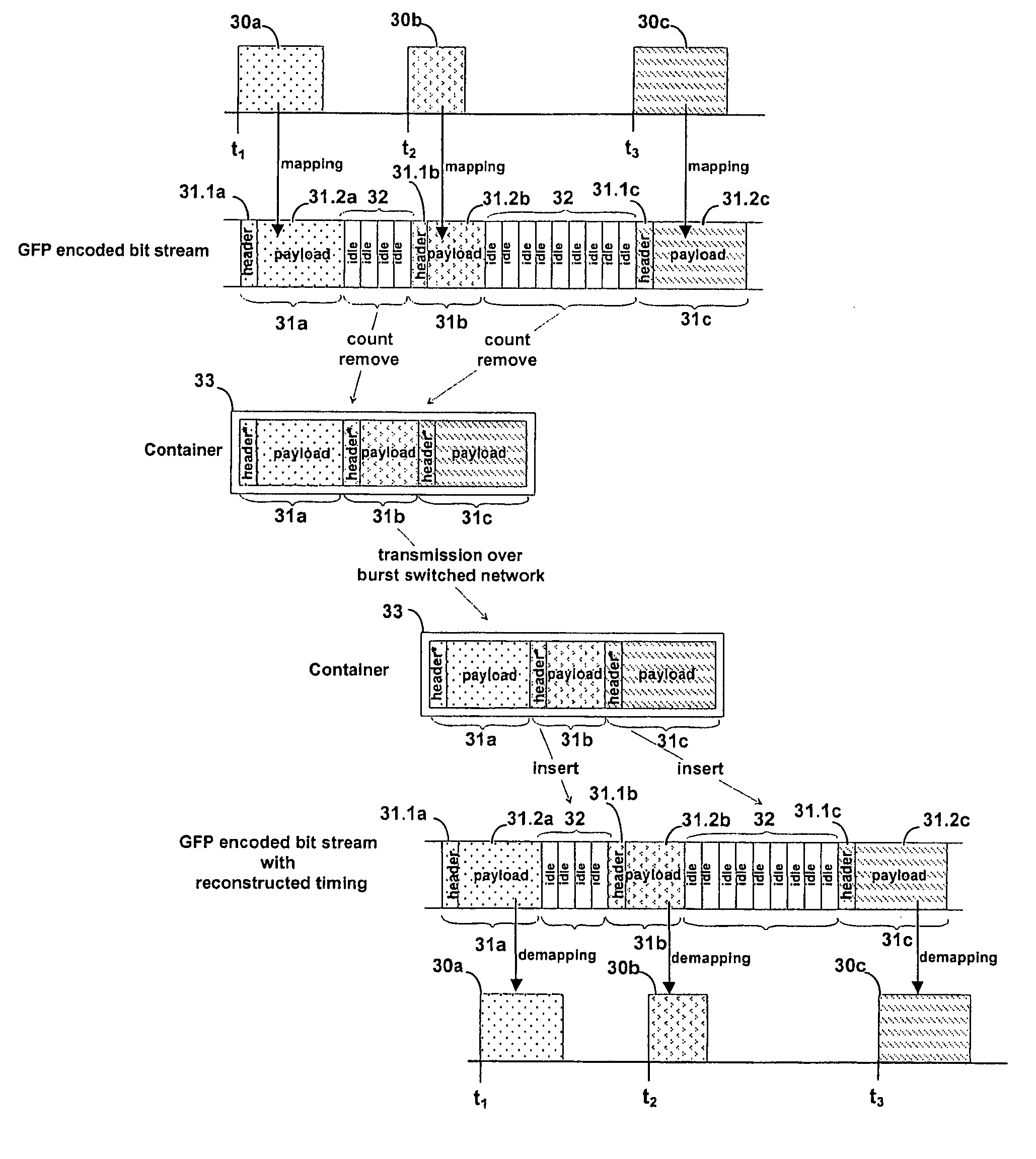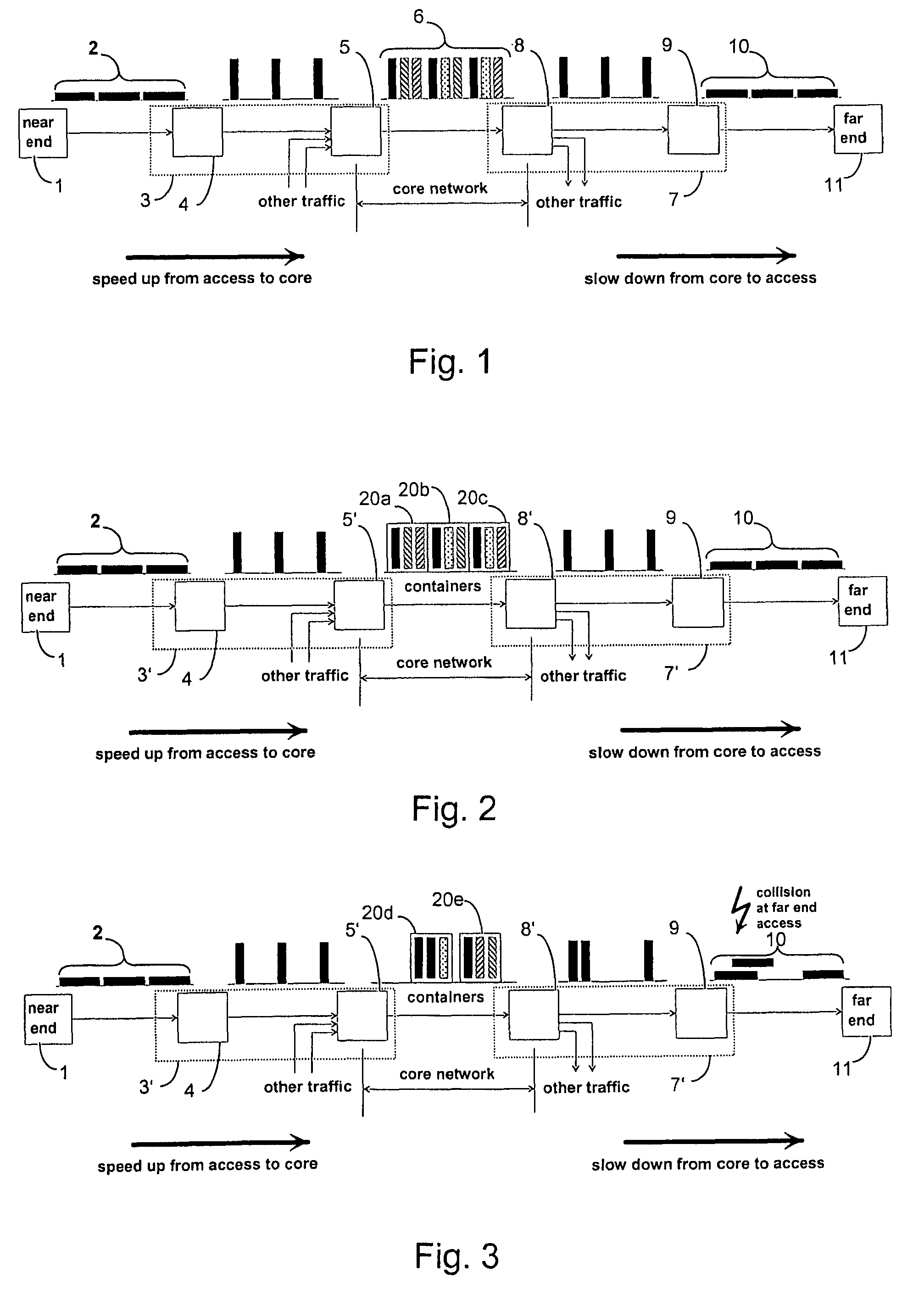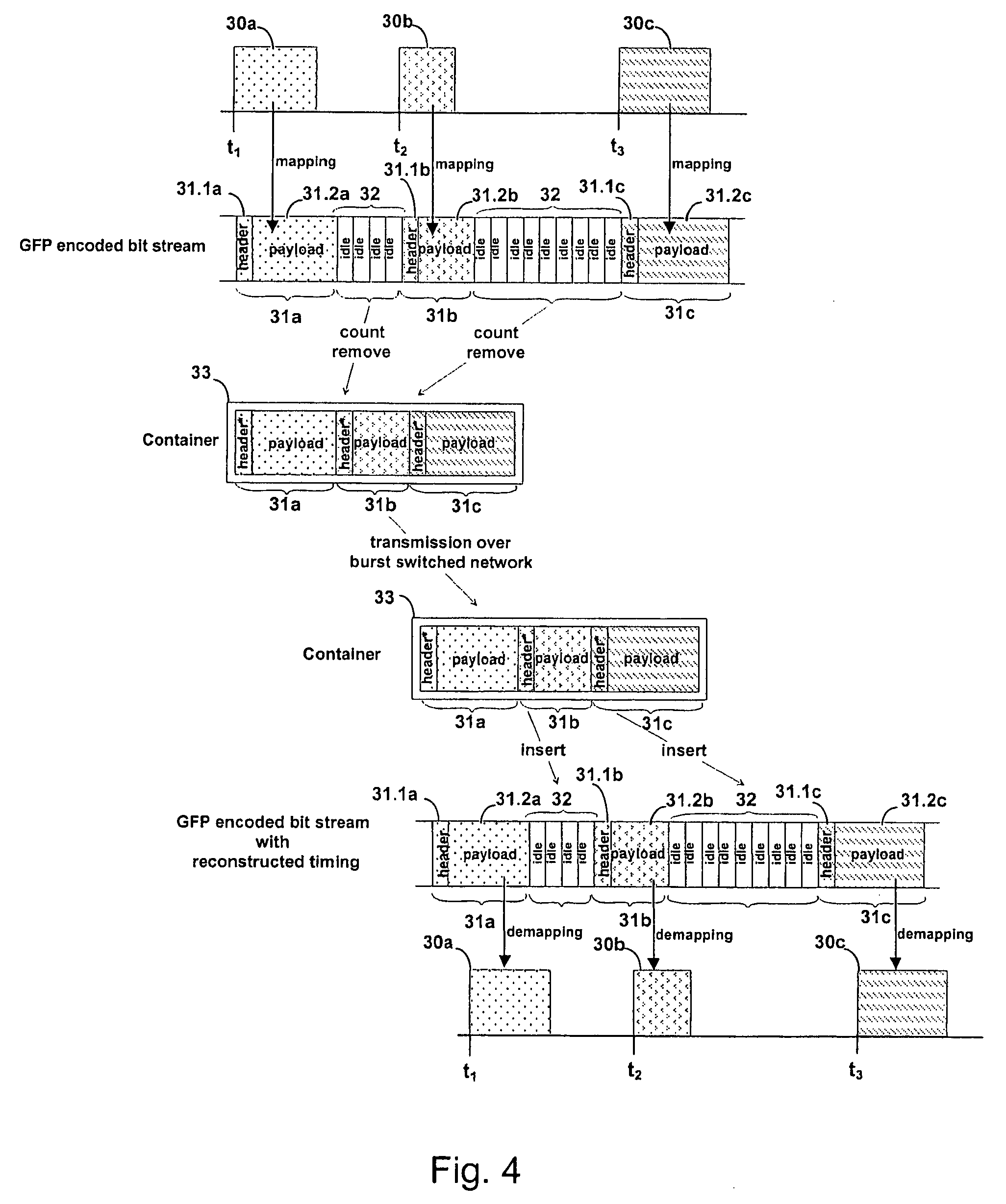Transport of aggregated client packets
a client packet and packet technology, applied in the field of optical communication, can solve the problems of large packet arrival jitter, variable accumulation time of client packets, temporal variation of delay, etc., and achieve the effect of high burst of forwarded packet flow
- Summary
- Abstract
- Description
- Claims
- Application Information
AI Technical Summary
Benefits of technology
Problems solved by technology
Method used
Image
Examples
first embodiment
[0069]FIGS. 1 to 3 were already discussed above. FIG. 4 illustrates the inventive method of transmitting client signals via a packet transport network with packet aggregation, e.g. a burst switched network. The method is implemented by means of an extension of the standard Generic Framing Procedure (GFP) as will be explained in the following.
[0070]Client packets 30a, 30b, 30c arrive at an ingress node of the network, e.g. at various times t1, t2 and t3. In FIG. 4, the client packets 30a, 30b, 30c relate to different client signals. The client packets 30a, 30b, 30c may be, e.g. Ethernet frames and / or IP / PPP frames.
[0071]The client packets 30a, 30b, 30c are encoded to a GFP encoded bit stream, i.e. the packets 30a, 30b, 30c are mapped to GFP client data frames 31a, 31b, 31c. Further, GFP idle frames 32 are placed between the GFP client data frames 31a, 31b, 31c to compensate for the gaps between the client packets 30a, 30b, 30c.
[0072]Two mapping modes exist in GFP: frame-mapped GFP (...
second embodiment
[0082]As discussed above, variable traffic load at the ingress node of such network further results in variable accumulation times for accumulating packets assigned to a container. This uncertainty in the accumulation time results in temporal variations of the delay between subsequent containers at the egress node and thus in jitter of packet arrival after de-aggregation. Such variation in the accumulation time due to traffic variations may be compensated as discussed below in the inventive method. As a result not only the relative timing of packets in the same container but also the relative timing of packets in different containers is reconstructed at the egress node.
[0083]The second embodiment of the inventive method as illustrated in FIG. 5 performs aggregation of client packets into containers and de-aggregation of client packets from a transmitted container by the following steps:[0084]1. At an ingress node of a high speed packet transport network, incoming client packets 40a-...
PUM
 Login to View More
Login to View More Abstract
Description
Claims
Application Information
 Login to View More
Login to View More - R&D
- Intellectual Property
- Life Sciences
- Materials
- Tech Scout
- Unparalleled Data Quality
- Higher Quality Content
- 60% Fewer Hallucinations
Browse by: Latest US Patents, China's latest patents, Technical Efficacy Thesaurus, Application Domain, Technology Topic, Popular Technical Reports.
© 2025 PatSnap. All rights reserved.Legal|Privacy policy|Modern Slavery Act Transparency Statement|Sitemap|About US| Contact US: help@patsnap.com



